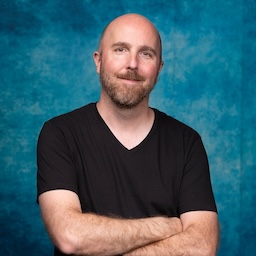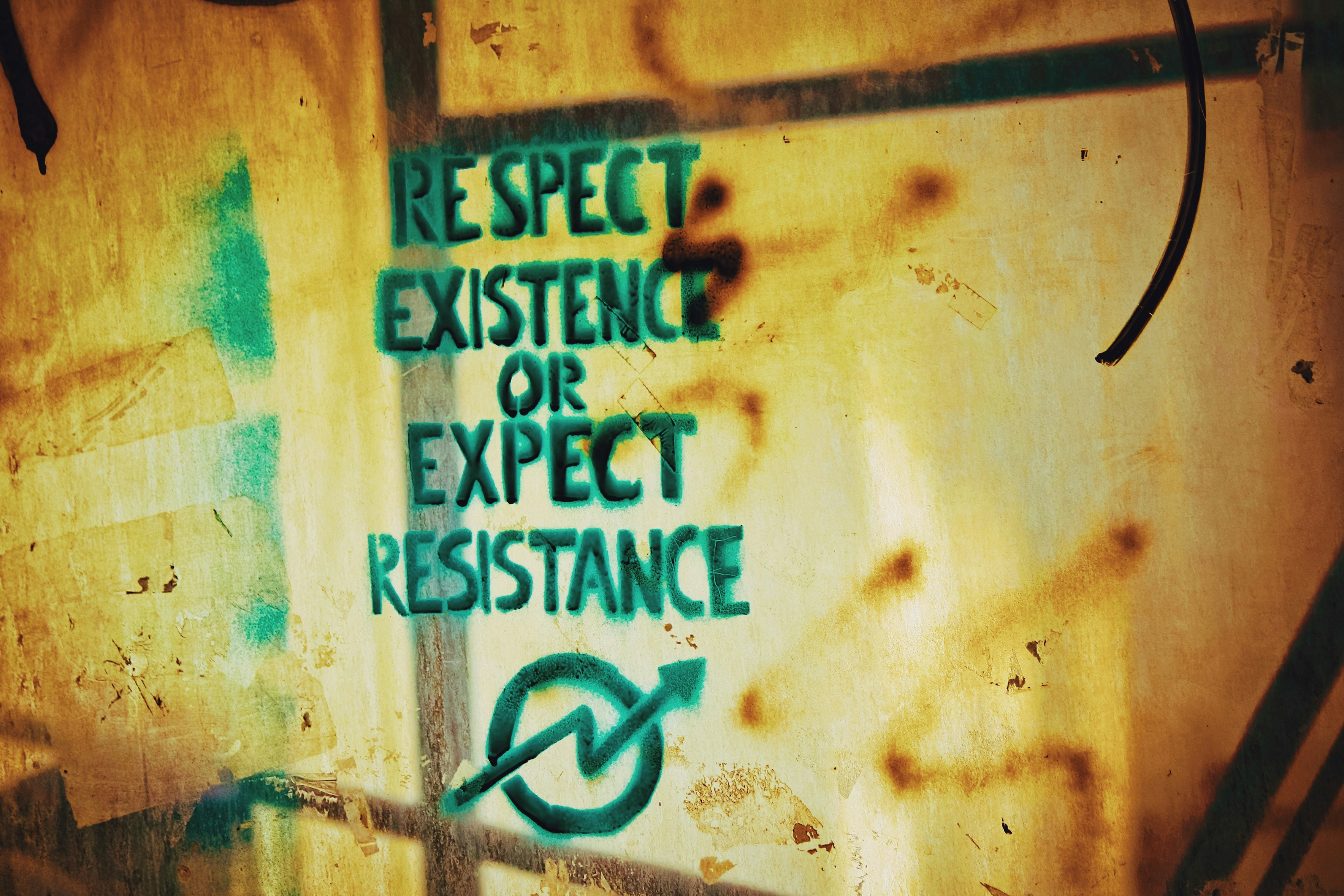
 John Moravec
John MoravecIn the absence of hope, we must build communities of trust
Education faces a crisis of purpose.
In many places, unfortunately including my home country of the United States, learning is no longer nurtured. It is managed. Books are banned. Teachers are silenced. Histories are erased or rewritten. Students who disagree are detained and deported. These actions reflect a growing comfort with authoritarian control, where education functions less as a path to knowledge than as a mechanism for enforcing obedience.
At the same time, global systems are under stress. Climate instability, forced migration, and artificial intelligence are reshaping how we live, work, and relate to each other. Yet educational institutions remain tethered to outdated models that no longer match the complexity of our world.
Reform (or lack thereof) is not the problem. Education systems remain built on designs that have changed little in over a century. Classrooms still rely on control. Curricula still prioritize compliance. Assessment still ranks rather than supports. These systems are working perfectly as intended. Most reforms aim to perfect this machine. That is the problem.
These conditions inspired Manifesto 25, a response to the widening gap between what education claims to do, what it actually does, and what is needed to reclaim education. It is a living document, created with voices from across the world, to offer a vision of what learning could look like if we centered human dignity, curiosity, and shared responsibility.
Last night, I shared the manifesto to an audience spanning the Americas during a webinar hosted by the Alternative Education Resource Organization (AERO). What followed was a discussion shaped by urgency, memory, and resistance. Educators and organizers reflected on what they are already doing, and what they are still fighting to protect.
Five pillars of Manifesto 25
Manifesto 25 outlines 25 points that can be generalized around five themes:
- Learning is a human right.
This goes beyond access to formal education. It recognizes the right to learn in ways that are meaningful, relevant, and rooted in one’s own context. A credential should not define a learner. A school building should not define where learning occurs. - Learning requires trust, agency, and self-efficacy.
Most systems assume students must be controlled. They manage time, space, and information. But learners are not problems. They are people. They need space to ask their own questions, follow their own paths, and take responsibility for what they learn. - Today’s schools are not preparing learners for the future.
We know this. Yet we continue to align education with outdated models of success. We prepare learners for jobs that may not exist. We train them to follow rules that no longer apply. We must instead prepare them to navigate uncertainty, engage with complexity, and build futures we cannot yet imagine. - Learning happens everywhere.
Most education policy ignores this. Valuable learning occurs in homes, gardens, workplaces, protests, and play. Yet institutions often dismiss these spaces. Formal systems reward the type of learning that fits neatly on a transcript. This narrows what we recognize and value. - Education requires shared responsibility.
Learning always serves for someone’s benefit. We must ask: for whom is this system working, and at whose expense? If we are serious about building just and democratic futures, we must support learners and educators who challenge unjust norms and create new possibilities.
Manifesto 25 does not offer solutions or pretend to have the right answers. Instead, it provides a shared language for people who are already doing the work of rethinking education in their own contexts. It serves as a framework for building understanding across differences so we can build more meaningful roadmaps toward the future.
The manifesto challenges conventional practice that educational systems can be reformed through minor adjustments (fine-tuning). It argues, instead, that education must be reimagined from the ground up. To illustrate this shift, the following table contrasts two conceptual models: control-oriented systems and liberatory learning frameworks. These models reflect opposing assumptions about the role of education, the learner, and the conditions under which learning becomes meaningful.
| Control-oriented systems | Liberatory learning frameworks |
| Compliance as a goal | Curiosity as a starting point |
| Standardized content and outcomes | Contextual and relational learning |
| Learning as preparation for defined workforce roles | Learning as a process of becoming |
| Knowledge delivered from authority | Knowledge co-constructed with others |
| Assessment as ranking | Assessment as reflection and growth |
| Teachers and staff as managers | Teachers and staff as collaborators |
| Surveillance and monitoring | Trust and autonomy |
| Curriculum shaped by state or corporate interests | Curriculum shaped by each learner’s and community’s needs |
| Legitimacy confined to formal institutions | Legitimacy grounded in lived experiences |
The manifesto emerged from conversations across the world, soliciting input and guidance first from the Global South before reaching the North. It was shaped by educators, organizers, and learners who brought their lived experience into the drafting process. It was released slowly and deliberately, with the invitation to sign, remix, and translate it built into its design. Individuals and organizations appear as co-authors to reflect collective ownership of the ideas and a commitment to the actions we must take to build preferred educational futures.
The purpose of the document is simple: to support communities in imagining and building their best possible futures. Not perfect ones. Not uniform ones. But futures where learning is relevant, dignified, and grounded in human needs.
A global conversation
The webinar brought together a diverse group of educators and organizers with deep experience across contexts. Some spoke from within public systems under pressure. Others worked in small, community-based alternatives. A teacher from Canada shared the story of a democratic school under political attack. An educator from Mexico asked how to scale change without erasing local cultures. The common thread was resistance: quiet, sustained, often unrecognized.
These educators were not asking for permission. They were already building new spaces for learning. They were using language from the manifesto to guide their actions. And they were asking for connection, not validation. The purpose of the manifesto is to help people reclaim the right to define what learning is, where it happens, and why it matters.
When hope collapses
Many people still hope education can be improved through policy, leadership, or innovation. But hope, by itself, does not produce change. In many countries, education is no longer neglected. It is being used to limit access to knowledge, remove critical thinking, and enforce obedience.
The United States now has a Secretary of Education who confuses artificial intelligence with steak sauce. This may seem like simple incompetence, but it is not. It reflects indifference (if not outright contempt) for public education. Those in power are no longer pretending to care. They seek a population trained to obey, not to think. The means do not matter to them, only the outcomes they can control.
In this context, hope is not enough. Manifesto 25 reminds us that when hope collapses, we must act. Not through violence, but through vision. Not through compliance, but through care. We must resist systems that reduce learning to conformity and build new ones based on trust, relevance, and shared responsibility.
There is no single answer to what education should become. Any meaningful response must emerge from local conditions, relationships, and histories. Attempts to standardize learning across diverse contexts often erase the very differences that make communities resilient. What matters most is defining clarity of purpose. We must decide what we are fighting for and what we are willing to leave behind. This is not a “fight” with violence—but with vision. With solidarity. With activated imagination. With creative action. And with communities built from trust.
Confronting fear
As long as education systems operate through fear and anxiety, they will resist collaboration, silence dissent, and block innovation. Fear undermines the very relationships that make learning possible.
We need a new theory of action that recognizes trust as a precondition for meaningful change. This means designing approaches to education that invite participation, rather than compliance. It means listening to students and families as contributors, not consumers. It also means building partnerships across sectors. Governments, educators, parents, and businesses must engage one another not through mandates, but through mutual responsibility.
As outlined in Knowmad Society, learners and other members of society are valued for their ability to adapt, collaborate, and apply knowledge across unpredictable settings. In that context, trust is the precondition for innovation. People need the freedom to take intellectual risks without fear of punishment or shame. Without trust, creativity stagnates and learning narrows.
This is summarized in Manifesto 25:
We can and must build cultures of trust in our schools and communities. As long as our education systems continue to be based on fear, anxiety, and distrust, challenges to all of the above will persist. If educators are to build a collective capacity to transform education, we need engaged communities, and we also need to engage with the communities we serve. This requires a new theory of action, centered on trust, where students, schools, governments, businesses, parents, and communities may engage in collaborative initiatives to co-create new education futures.
Meaningful transformation begins with trust as a basic element that must be practiced, renewed, and protected. This includes trust in students, in educators, and in communities. It also requires institutions to trust that people will act in the interest of collective well-being when they are given the opportunity and support to do so.
During the webinar, participants described what trust-based education looks like in practice. One educator shared how a democratic public school in Toronto continues to operate under mounting political pressure. Others emphasized the value of student-designed portfolios, not as compliance tools, but as expressions of learning shaped by student goals and contexts. Across these shared experiences, trust emerged not as a theory, but as a daily practice, built through relationships, mutual accountability, and the freedom to pursue learning that matters. But these are outliers driven by educational changemakers, not the norm.
Communities of trust are not uniform. They vary across geography, culture, and institutional setting. In some cases, they take the form of democratic schools, where decisions are made collectively by students and staff. In others, they emerge in informal learning hubs, mutual aid networks, or grassroots education cooperatives. What binds them is a shared commitment to honoring learners as full participants in shaping their educational journeys.
This approach has practical implications. In trust-based settings, educators often shift their roles from deliverers of content to facilitators of process. Relationships are emphasized over efficiency. Time is treated as flexible, allowing for deeper inquiry and reflection. Conflict is addressed as a site for learning, rather than as a disruption to be suppressed.
Building such communities also requires institutions to take risks with uncommon boldness. Trust cannot flourish in environments dominated by performance metrics or compliance checklists that ultimately remove trust from the system. Schools must be willing to question their own assumptions, redistribute authority, and invite participation from those who are often excluded from decision-making, especially youth, families, and marginalized communities.
Any meaningful response must grow from specific conditions, relationships, and histories. Efforts to standardize learning across diverse contexts often erase the differences that allow communities to adapt and persist. The challenge to gain clarity of purpose; to define who we want to become. We must decide what to protect, what to change, and what to leave behind as we build new cultures of trust in our schools and communities.
Read and sign Manifesto 25 at https://manifesto25.org



